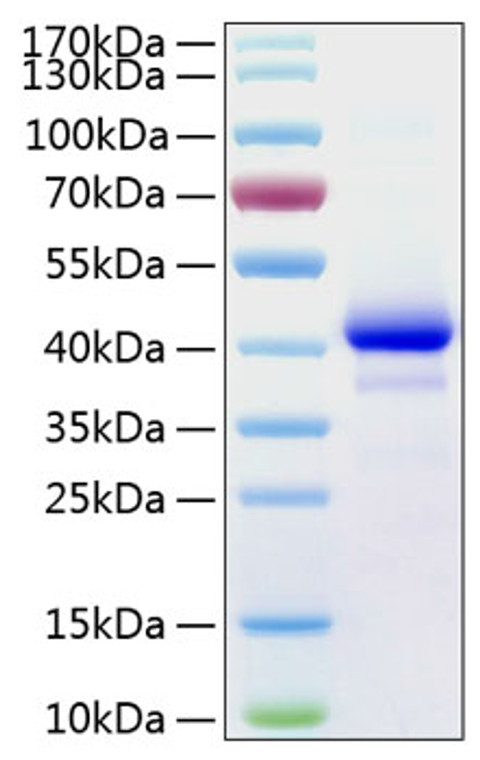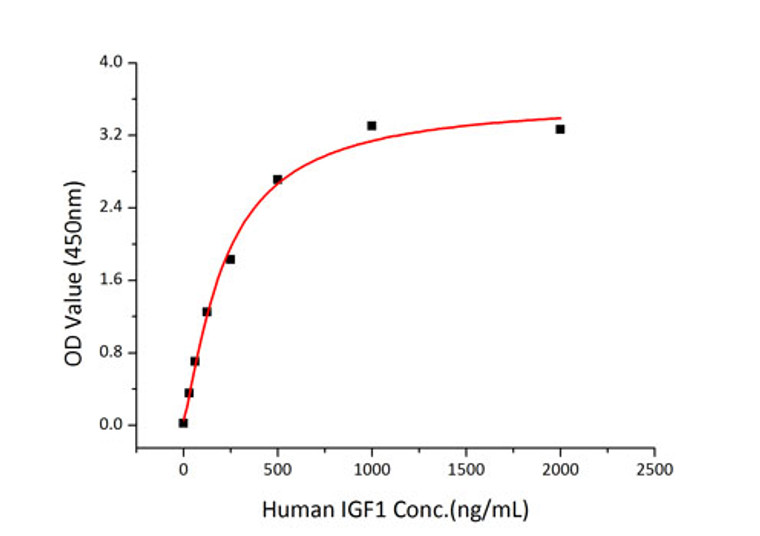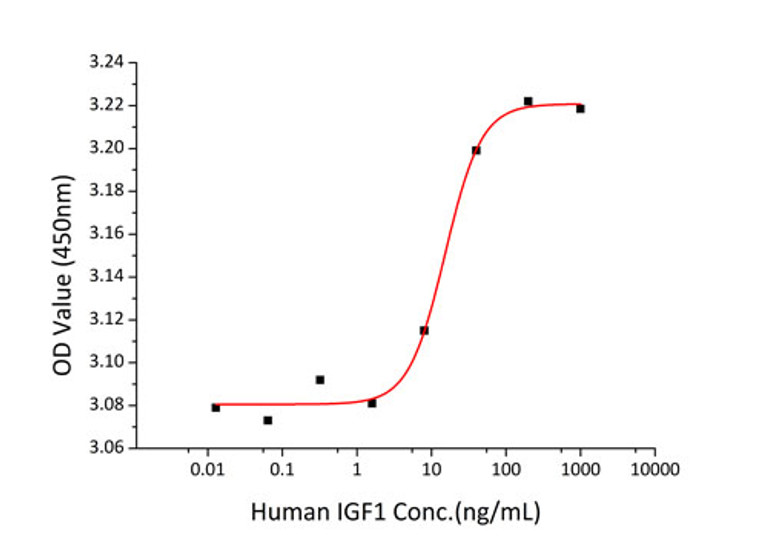| Host: |
HEK293 cells |
| Reactivity: |
Human |
| Note: |
STRICTLY FOR FURTHER SCIENTIFIC RESEARCH USE ONLY (RUO). MUST NOT TO BE USED IN DIAGNOSTIC OR THERAPEUTIC APPLICATIONS. |
| Short Description: |
Active Recombinant-Human IGF-I-C-hFc&His protein was developed from hek293 cells and has a target region of C-hFc&His. For use in research applications. |
| Formulation: |
Lyophilized from a 0.22 Mu m filtered solution of PBS, pH 7.4. Contact us for customized product form or formulation. |
| Immunoreactivity: |
Measured by its ability to stimulate p70 S6 Kinase (Thr389) and p85 S6 Kinase (Thr412) autophosphorylation in 293T human embryonic kidney cells.0.01-1 ng/mL of Recombinant Human IGF1 can effectively enhance p70 S6 Kinase (Thr389) and p85 S6 Kinase (T |
| Gene Symbol: |
IGF1 |
| Gene ID: |
3479 |
| Uniprot ID: |
IGF1_HUMAN |
| Immunogen Region: |
Gly 49-Ala 118 |
| Immunogen: |
Recombinant Human IGF-I Protein is produced by HEK293 cells expression system. The target protein is expressed with sequence ( Gly 49-Ala 118) of human IGF1 (Accession #NP_001104755.1) fused with an Fc, 6×His tag at the C-terminus. |
| Function | The insulin-like growth factors, isolated from plasma, are structurally and functionally related to insulin but have a much higher growth-promoting activity. May be a physiological regulator of 1-14C-2-deoxy-D-glucose (2DG) transport and glycogen synthesis in osteoblasts. Stimulates glucose transport in bone-derived osteoblastic (PyMS) cells and is effective at much lower concentrations than insulin, not only regarding glycogen and DNA synthesis but also with regard to enhancing glucose uptake. May play a role in synapse maturation. Ca(2+)-dependent exocytosis of IGF1 is required for sensory perception of smell in the olfactory bulb. Acts as a ligand for IGF1R. Binds to the alpha subunit of IGF1R, leading to the activation of the intrinsic tyrosine kinase activity which autophosphorylates tyrosine residues in the beta subunit thus initiatiating a cascade of down-stream signaling events leading to activation of the PI3K-AKT/PKB and the Ras-MAPK pathways. Binds to integrins ITGAV:ITGB3 and ITGA6:ITGB4. Its binding to integrins and subsequent ternary complex formation with integrins and IGFR1 are essential for IGF1 signaling. Induces the phosphorylation and activation of IGFR1, MAPK3/ERK1, MAPK1/ERK2 and AKT1. |
| Protein Name | Insulin-Like Growth Factor IIgf-IMechano Growth FactorMgfSomatomedin-C |
| Database Links | Reactome: R-HSA-114608Reactome: R-HSA-2404192Reactome: R-HSA-2428928Reactome: R-HSA-2428933Reactome: R-HSA-381426Reactome: R-HSA-422085 |
| Cellular Localisation | Secreted |
| Alternative Protein Names | Insulin-Like Growth Factor I proteinIgf-I proteinMechano Growth Factor proteinMgf proteinSomatomedin-C proteinIGF1 proteinIBP1 protein |
Information sourced from Uniprot.org
12 months for antibodies. 6 months for ELISA Kits. Please see website T&Cs for further guidance













